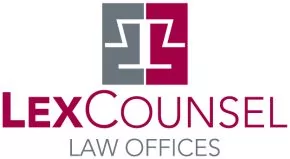With the introduction of the Insolvency & Bankruptcy Code, 2016 ("Code"), there has been a flurry of litigation before the National Company Law Tribunals ("NCLT") and the National Company Law Appellate Tribunal seeking initiation of corporate insolvency resolution process with respect to companies in default of debt. The Code being a new legislation is not without loopholes. As a result, the Code has already undergone amendments within a short span of time to eliminate such ambiguities and achieve the real objective of the Code.
Exclusion of Promoters: One of the crucial amendments to the Code has been insertion of Section 29A vide Insolvency & Bankruptcy Code (Amendment) Act, 2018 dated January 19, 2018 with retrospective effect from November 23, 2017. Section 29A is a restrictive provision and specifies list of persons who are not eligible to be a "resolution applicant". Under the unamended Code "any person" could be a resolution applicant thereby allowing even the defaulting promoters to bid for the assets of the company undergoing insolvency resolution process. As a result many defaulting promoters of the company under insolvency proceedings took undue advantage of this provision by making back door entries and bidding for the assets of the company (which they had earlier mismanaged and caused bad debts) at the lowest rates. To curb this nuisance, Section 29A has been inserted which not only restricts the promoters from being "resolution applicant" but also, inter alia, restricts the persons connected with the promoters. The intent of the legislature to insert Section 29A is clear and unambiguous i.e., to prohibit certain class of persons from submitting a resolution plan who, on account of their antecedents, could adversely impact the credibility of the resolution process under the Code1. This is also important as one of the objectives of the Code is to conduct the insolvency resolution process in a time bound manner for maximization of assets of the corporate debtor which was being defeated due to the misuse of the bidding process by the promoters of the defaulting company.
However, recently the NCLT, Mumbai Bench, in the matter of Wig Associates Private Limited ("Company") has allowed the resolution plan offered by the sole resolution applicant who is connected/related to the promoter directors of the Company. In this case, the resolution plan was approved in the meeting of the committee of creditors held on April 20, 2018 i.e., after the effective date of applicability of Section 29A.
Moot Issue: The question that arose before the NCLT, Mumbai Bench, was whether resolution plan of a resolution applicant who is related to the promoter directors of the corporate debtor be allowed even after insertion of Section 29A to the Code which is effective from November 23, 2017? To arrive at the decision, NCLT, Mumbai Bench, went into interpreting applicability of amendments based on the rule of interpretation of statute. The bench concluded that any amendment to a statute affecting the legal rights of an individual must be presumed to be prospective in nature unless expressly or impliedly made applicable retrospectively. The bench further opined that unless an amendment is made retrospective, it does not affect the substantive rights of the parties accrued to them on the date of the suit. The bench also observed that insolvency proceedings initiated under the Code are continuous in nature, which commence from the date of admission of an application made under the Code for initiation of resolution process and ends till an order is passed either approving the resolution plan or initiating the liquidation proceedings of the company/corporate debtor. Based on the aforesaid reasoning, the bench concluded that since the petition was admitted on August 24, 2017 and the insolvency proceedings under the Code are continuous in nature, the provisions of the un-amended Code will apply in the present case and thus the resolution plan submitted by the resolution applicant related to the promoter directors can be accepted (even subsequent to the introduction of Section 29A to the Code).
Critique: The decision of the NCLT, Mumbai Bench, is a substantial diversion from the intent of the legislature in introducing Section 29A to the Code. In fact, clause (4) to Section 30 of the Code was also substituted vide Insolvency & Bankruptcy Code (Amendment) Act, 2018 dated January 19, 2018. First proviso to Section 30(4) categorically states that "Provided that the committee of creditors shall not approve a resolution plan submitted before the commencement of the Insolvency and Bankruptcy Code (Amendment Ordinance) 2017 (Ord. 7 of 2017), where the resolution applicant is ineligible under section 29A and may require the resolution professional to invite a fresh resolution plan where no other resolution plan is available with it". It is evident that this important proviso (which emphasizes the intent behind the amendment) has been completely ignored by the bench while deciding the case of Wig Associates Private Limited.
Though the judgment of NCLT, Mumbai Bench, is not binding on the other benches of NCLT, the same may cause a turmoil as many petitions which were admitted before November 23, 2017 are currently pending and promoters of corporate debtors in the said petitions may attempt to take advantage by placing reliance on the above order of NCLT, Mumbai Bench and require the IRPs/adjudicating authorities to consider the resolution plans submitted by them even if they are expressly prohibited under Section 29A. It would be interesting to see the potential impact of the judgement where there is no opposite party to challenge the judgment (the petition being an application under Section 10 of the Code seeking initiation of corporate insolvency resolution process by the corporate debtor applicant) in diluting the express provisions of the amended statute.
Footnote
[1] We may add that the recent Insolvency & Bankruptcy Code (Amendment) Ordinance, 2018 dated June 6, 2018 has introduced a new provision "Section 240A" to exempt micro, small and medium enterprises from clauses (c) and (h) of Section 29A of the Code. Clause (c) of Section 29A makes a person ineligible to be a resolution applicant if such person – has an account or controls and manages the account of the corporate debtor or is a promoter of the corporate debtor and such account has been classified as a non-performing asset and at least one year has lapsed from the date of classification till the date of commencement of insolvency resolution process. Clause (h) of Section 29A makes a person ineligible to be resolution applicant if such person has executed a guarantee in favour a creditor who has initiated insolvency resolution process against the corporate debtor and such guarantee has been invoked and remains unpaid in full or in part.
LexCounsel provides this e-update on a complimentary basis solely for informational purposes. It is not intended to constitute, and should not be taken as, legal advice, or a communication intended to solicit or establish any attorney-client relationship between LexCounsel and the reader(s). LexCounsel shall not have any obligations or liabilities towards any acts or omission of any reader(s) consequent to any information contained in this e-newsletter. The readers are advised to consult competent professionals in their own judgment before acting on the basis of any information provided hereby.


